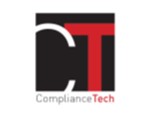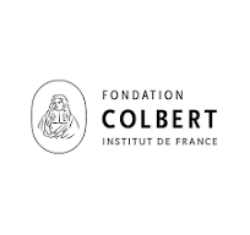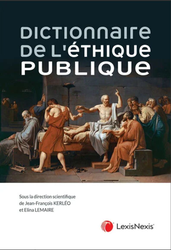The recent news
Oct. 2, 2025
Publications
🌐follow Marie-Anne Frison-Roche on LinkedIn
🌐subscribe to the Newsletter MAFR Regulation, Compliance, Law
🌐subscribe to the Video Newsletter MAFR Surplomb
🌐subscribe to the Newsletter MaFR Droit & Art
____
► Full Reference: M.-A. Frison-Roche, "À quoi engagent les engagements" (In Compliance Law, the legal consequences for Entreprises of their commitments and undertakings), in M.-A. Frison-Roche (dir.), L'Obligation de Compliance, Journal of Regulation & Compliance (JoRC) and Lefebvre-Dalloz, coll. "Régulations & Compliance", 2025, pp.419-447.
____
📝read the article (in French)
____
____
📕read the general presentation of the book, L'Obligation de Compliance, in which this article is published
📚see the general presentation of the series "Régulations & Compliance" in which this book is published
____
► English summary of this article: The innocents might believe, taking the Law and its words literally, that "commitments" are binding on those who make them. Shouldn't they be afraid of falling into the trap of the 'false friend', which is what the Law wants to protect them from (as stated in the prolegomena)?
Indeed, the innocent persons think that those who make commitments ask what they must do and say what they will do. Yet, strangely enough, the 'commitments' that are so frequent and common in compliance behaviours are often considered by those who adopt them to have no binding value! Doubtless because they come under disciplines other than Law, such as the art of Management or Ethics. It is both very important and sometimes difficult to distinguish between these different Orders - Management, Moral Norms and Law - because they are intertwined, but because their respective standards do not have the same scope, it is important to untangle this tangle. This potentially creates a great deal of insecurity for companies (I).
The legal certainty comes back when commitments take the form of contracts (II), which is becoming more common as companies contractualise their legal Compliance Obligations, thereby changing the nature of the resulting liability, with the contract retaining the imprint of the legal order or not having the same scope if this prerequisite is not present.
But the contours and distinctions are not so uncontested. In fact, the qualification of unilateral undertaking of will is proposed to apprehend the various documents issued by the companies, with the consequences which are attached to that, in particular the transformation of the company into a 'debtor', which would change the position of the stakeholders with regard to it (III).
It remains that the undertakings expressed by companies on so many important subjects cannot be ignored: they are facts (IV). It is as such that they must be legally considered. In this case, Civil Liability will have to deal with them if the company, in implementing what it says, what it writes and in the way it behaves, commits a fault or negligence that causes damage, not only the sole existence of an undertaking.
________
Oct. 1, 2025
Law by Illustrations
🌐suivre Marie-Anne Frison-Roche sur LinkedIn
🌐s'abonner à la Newsletter MAFR Regulation, Compliance, Law
🌐s'abonner à la Newsletter en vidéo MAFR Surplomb
🌐s'abonner à la Newsletter MaFR Droit & Art
____
► Référence complète : M.-A. Frison-Roche, "La Justice en marbre. Dans l'église San Carlo de Noto, si on lève les yeux, la Justice est là, regardant la Prudence, la Force et la Tempérance", article de la Newsletter Droit & Art, octobre 2025.
____
🌐Consulter la publication de cet article dans la Newsletter MaFR Droit & Art : cliquer ici
____
🗺️lire une présentation générale de la ville sicilienne de Noto
____
► Résumé de l'article : Dans l'église San Carlo de la ville de Noto en Sicile, un statuaire rassemble la Justice, tenant une balance et dont les yeux ne sont pas bandés, qui regarde face à elle la statue de la Prudence,se penchant vers un enfant qui la regarde. Elle a de part et d'autre la statue de la Force, au pied de laquelle est l'Aigle, et la Tempérance, qui porte un sac très lourd.
Pour contempler les quatre vertus qui s'épaulent les unes les autres il faut d'abord monter les marches très nombreuses qui mènent au bâtiment puis au sein de celui-ci prendre le temps de lever les yeux car elles ont été placées en hauteur, loin du vacarme des passants.
____
🔓lire l'article ci-dessous⤵️

Sept. 30, 2025
Publications

🌐follow Marie-Anne Frison-Roche on LinkedIn
🌐subscribe to the Newsletter MAFR Regulation, Compliance, Law
🌐subscribe to the Video Newsletter MAFR Surplomb / Overhang
🌐subscribe to the Newsletter MaFR Droit & Art
____
 ► Full Reference: M.-A. Frison-Roche, If King Solomon's probationary strategy hadn't worked, Working Paper, October 2025.
► Full Reference: M.-A. Frison-Roche, If King Solomon's probationary strategy hadn't worked, Working Paper, October 2025.
____
📝 This Working Paper is the basis of the article dedicated to Professor Pierre Crocq.
____
► Summary of this Working Paper: The
_____
🔓read the developments below⤵️
Sept. 27, 2025
Newsletter MAFR - Law, Compliance, Regulation

🌐suivre Marie-Anne Frison-Roche sur LinkedIn
🌐s'abonner à la Newsletter MAFR Regulation, Compliance, Law
🌐s'abonner à la Newsletter en vidéo MAFR Surplomb
🌐s'abonner à la Newsletter MaFR Droit & Art
____
► Référence complète : M.-A. Frison-Roche, "Exerçant un pouvoir de sanction, le Régulateur doit informer la "personne concernée" de son droit de se taire (cons. const., 26 sept. 2025)", Newsletter MAFR Law, Compliance, Regulation, 27 septembre 2025
____
📧Lire par abonnement gratuit d'autres news de la Newsletter MAFR - Law, Compliance, Regulation
____
► Résumé de l'article : Le Conseil constitutionnel a rendu le 26 septembre 2025 une décision n°2025-1164 , Société Eurotitrisation et autres qui déclare une disposition du Code monétaire et financier contraire à la Constitution.
Le Conseil déclare, et cela ne surprend pas notamment parce qu'il enrichit une jurisprudence débutée en 2016 affirmant régulièrement le caractère constitutionnel et autonome du "droit de se taire", que le fait pour le CMF de ne pas contraindre la Commission des sanctions de l'Autorité des marchés financiers (AMF) à informer une personne concernée de son droit de se faire rend de ce meme fait le dispositif procédural organisé par ce texte (IV de l'art.L 621-15 CMF, qui ne formulait qu'en termes généraux l'obligation de respecter le principe du contradictoire et des droits de la défense, sans viser le droit de se taire) contraire à la Constitution.
Cette sanction, intègre donc la règle dans la loi française, car en censurant à effet immédiat un silence le Conseil injecte immédiatement le droit de se taire dans les procédues en cours devant la Commission des sanctions de l'AMF (I). La solution était prévisible et vaut pour toutes les Autorités de régulations (II). Mais elle montre les tensions entre l'exercice du pouvoir spécial de sanction, qui appelle le droit de se taire au profit des "personnes concernées" et le pouvoir général de régulation, dont la sanction n'est pourtant qu'un outil, régulation qui suppose l'obtention d'informations et supporte mal ce silence (III). Plus largement, c'est l'affrontement entre l'impératif des secrets et l'impératif de l'information qui se déroule (IV).
____
📧lire l'article publié le 27 septembre dans la Newsletter MAFR - Law, Compliance, Regulation
Sept. 23, 2025
Conferences

🌐suivre Marie-Anne Frison-Roche sur LinkedIn
🌐s'abonner à la Newsletter MAFR Regulation, Compliance, Law
🌐s'abonner à la Newsletter en vidéo MAFR Surplomb
🌐s'abonner à la Newsletter MaFR Droit & Art
____
► Référence complète : M.-A. Frison-Roche, "Qu'est-ce que le "Gouvernement des juges" dans un office renouvelé par le Droit de la compliance, in table-ronde "faut-il craindre le gouvernement des juges ?", Fondation Colbert, Le droit et son impact sur l’économie. Comment en faire un atout pour la France , France-Amérique, 9 avenue Franklin-Roosevelt, 75008 Paris, 23 septembre 2025.
____
Cette intervention s'insère dans une des deux tables-rondes de la manifestation.
► Consulter le programme général de la manifestation
____
► Résumé de l'intervention : Pour se poser l'alternative de la "crainte", soit celle de l'absence de régles de droit, soit celle de l'omnipotence des juges, il convient d'une façon plus calme de rappeler ce qu'il appelle si souvent "le gouvernement des juges". L'expression n'est pas technique, elle exprime souvent en elle-même la crainte, voire la détestation des juges. C'est l'épouvantail par excellence. Comme d'ailleurs la "dérégulation", qui sans doute est confondue avec la simplification des réglementations.
Toujours est-il puisqu'on nous le demande, empruntons les voies des expressions convenues, ce que l'on appelle hors des textes de droit, le "gouvernement des juges". Cela serait donc des "juges". Et qui "gouverneraient".
I. Les "juges".
Lesquels ?
Les personnes qui parlent du "gouvernement des juges" visent les juges judiciaires. Car les juges administratifs, comme le Conseil d'Etat, dans son fonction juridictionnelle qui touche l'ensemble de l'action économique de l'Etat français, semble moins être la cible. Moins lorsqu'il s'agit des tribunaux administratifs, lorsqu'ils répondent aux questions posées par les ONG sur les engagements climatiques des personnes publiques. De même que les juges européens, comme la Cour de justice de l'Union européennes lorsqu'elle bloque le transfert des données personnelles de l'Europe vers les Etats-Unis, semblent moins visés.
Non, c'est avant tout le juge judiciaire : le juge pénal (abus de biens sociaux), le juge civil (contentieux de la vigilance), le juge social).
Et c'est avant tout le juge français. Le juge américain semble moins critiqué. Notamment en ce moment. Pour deux raisons. D'abord, parce que le système constitutionnel n'est pas le même (check and balance) et ici, cela est rappelé à chaque fois, le juge en France est une autorité dont le Président, qui lui est un pouvoir, a la garde. Mais à la fin, l'on regarde que la différence entre un pouvoir et une autorité peut être fine (en Droit économique, empli de droit souple, on le sait bien).
Voilà pour le Juge.
Que faudrait-il craindre d'eux ?
II. qui "gouvernent"
Qu'est-ce que gouverner.
L'office du juge est rappelé dans l'article 12 du Code de procédure civile, dont la portée est générale.
Il dispose :"Le juge tranche le litige conformément aux règles de droit qui lui sont applicables. Il doit donner ou restituer leur exacte qualification aux faits et actes litigieux sans s'arrêt à la dénomination que les partis en auraient proposées".
L'idée française est effectivement que le juge civil est là pour trancher une dispute entre deux litigants particuliers sur un différent singulier. Cela est vrai quelque soit l'ampleur du différent, notamment le montant financier en jeu, quelque soit le sujet dont il s'agit. Cela est vrai aussi pour le juge administratif et pour le juge pénal, qui restaure la légalité, qui a été objectivement froissée par l'infraction (pénal) ou par l'adoption d'un texte non-conforme à une norme supérieur (contrôle de légalité ou de constitutionnalité).
La "dispute" cesse alors d'être purement "subjective", entre deux parties qui se disputent, elle devient plus "objective", soit entre une personne et une loi (droit pénal, le délinquant ayant comme abimé la loi), soit entre deux textes (la loi inconstitutionnelle détériorant la Constitution).
Cela ne remet pas en cause l'office que l'on dit "neutre" du juge, qui est au service des parties, puisqu'il met fin à leur dispute, la loi n'ayant que son instrument pour ce faire, et au service de la loi elle-même, puisqu'il est le gardien neutre de la hiérarchie des normes et de l'Etat de Droit.
L'idée de "gouvernement" renvoie à tout autre chose : l'idée de faire des choix pour le futur d'un groupe social. C'est en cela que le "gouvernement" est indissociable du pouvoir et de l'emprise sur le futur.
La résolution des disputes particulières de droit économique, la restauration de la légalité des textes à portée économique a toujours eu un effet économique majeure. La considération par les juges qui résolvent les disputes et restaurent la légalité a toujours existé, que l'on soit en systèmes de Civil Law ou en systèmes de Common Law (distinction professorale que l'on a toujours exagérée).
Le juge ne peut pas refuser de statuer et de répondre à la question que les parties lui posent. L'article 5 du Code civil interdit les "arrêts de réglement" en ces termes : "Il est défendu aux juges de prononcer par voie de disposition générale et réglementaire sur les causes qui leur sont soumises"
Mais il est précédé par l'article 4 du Code civil, l'ordre des 2 articles montrant que c'est celui-ci qui est le plus important : " Le juge qui refusera de juger, sous prétexte du silence, de l'obscurité ou de l'insuffisance de la loi, pourra être poursuivi comme coupable de déni de justice".
Le "gouvernement des juges ne vise donc pas le fait de prendre des décisions à très grand impact économique, même à effet "systémique", si les parties le demandent, le juge étant toujours obligé d'interpréter la loi. Il s'agit plutôt de faire à cette occasion des choix pour l'avenir économique et social d'un groupe social, d'une Nation.
Le juge a-t-il (ou doit-il) en matière économique faire des choix pour le futur du groupe social via les questions de dimensions économiques qui lui sont posées ?
C'est aujourd'hui la question qui est posées à travers le monde, que l'on soit en Europe (Contentieux systémique émergent), en Chine (A.I.) et aux Etats-Unis.
III. Le bouversement de ce que font les juges du fait du Droit de la Compliance
Mais ces éléments classiques de la question posée sont renouvelés du fait de l'émergence d'une nouvelle branche du Droit : le Droit de la compliance
_____
mafr, Vers un gouvernement économique des juges, 2005
________
Sept. 15, 2025
Conferences

🌐follow Marie-Anne Frison-Roche on LinkedIn
🌐subscribe to the Newsletter MAFR Regulation, Compliance, Law
🌐subscribe to the Video Newsletter MAFR Surplomb
🌐subscribe to the Newsletter MaFR Droit & Art
____
► Full Reference: M.-A. Frison-Roche, "Compliance Law and Systemic Litigation", 15 September 2025, Madrid.
____
This speech is the opening speech of the event.
🧮 See the general program of the event
____
📅See the slides (not used), basis for this speechs
____
► Summary of the conference: This manifestation, made fo many interventions, is about the role and the evolution of the in-house lawyers in the Europe on the move. I opened the event by focusing on the importance of the Compliance which drives the companies now, in the future and for the future. It is quite difficile because currently Compliance Law is quite misunderstund by almost every. Therefore the first part of my intervention has been the explanation of what is the very new branch of Law, built of political Monumental Goals (Compliance Law is not just the obligation to be conform with, just to obey), the specificity of European Compliance Monumental Goals (not only the sustainability of systems, but also the concern for present and future human beins implied in them).
This systemic new branch of Law, humanist branch of Law in Europe put the Judge at its center.
Par translation, this is creating a new sort of Litigation : the Compliance Systemic Litigation. Its object is the future (as Compliance Law itselft).
Contrary to the "conformity", which might be left to algorithms, Compliance Law, inseparable to Systemic Litigation, are giving new role for Judges, for external lawyers and for internal lawyers.
________
Sept. 10, 2025
Publications

🌐follow Marie-Anne Frison-Roche on LinkedIn
🌐subscribe to the Newsletter MAFR Regulation, Compliance, Law
🌐subscribe to the Video Newsletter MAFR Surplomb
🌐subscribe to the Newsletter MaFR Droit & Art
____
► Full Reference:: M.-A. Frison-Roche, "Compliance", in J.-Fr. Kerléo & E. Lemaire (dir.), Dictionnaire de l'éthique publique, LexisNexis, 2025, pp.
____
📗 read the general presentation of the Dictionary.
____
📝read the article (in French).
_____
► English Summary of the article defining what is Compliance: The article explains Compliance in 7 points.
Firstly, it states that Compliance oscillates between a weak and a strong definition. It can be defined weakly as the demonstration of obedience to all applicable regulations, or it can be defined strongly as active participation in the achievement of 'monumental' ambitions for the future of the social group. Positive legal rules and case law are increasingly revealing the relevance of the strong definition, with the weak definition referring only to conformity to the Law.
Secondly, this understanding of the new branch of Law known as Compliance Law will enable us to master the regulations specifically relating to compliance (RGPD, French laws such as Sapin 2 Act and Vigilance Act, AML/FT, European AI Act, etc.), which are both more specific and more restrictive than the general obligation to comply with the applicable legal rules.
Thirdly, everyone can see the move from "extraterritoriality" to another thing which is the indifference to territoryd: Compliance is the right instrument for the digital space and for chains of activities.
Fourthly, this is due to the very nature of Compliance, which consists in internalising in companies in a position to be active the “Monumental Negative Goal” of preventing the collapse of systems (energy, climate, digital, banking, financial, algorithmic, etc.).
Fifthly, this internalisation is carried out by States and public authorities in entities in a position to act, i.e. in concrete terms in companies in a position to be active to reach the “Monumental Goals” by contributing to the improvement of systems so that these systems benefit in the present and the future the people who are de jure and de facto involved in them.
Sixthly, these goals become positive when it comes to educating people about probity and effective equality between human beings, notably through training policies. In this respect, Vigilance is the “cutting edge” of Compliance.
Seventhly, an “ex ante responsibility” of Crucial Operators subject to Compliance is emerging, and is articulated by Systemic Litigation which aims to balance and maintain systems, carried by States and these crucial companies.
____
📝read the preentation of the other article written by Marie-Anne Frison-Roche for this Dictionary: "Régulation"
________
Sept. 10, 2025
Publications

🌐follow Marie-Anne Frison-Roche on LinkedIn
🌐subscribe to the Newsletter MAFR Regulation, Compliance, Law
🌐subscribe to the Video Newsletter MAFR Surplomb
🌐subscribe to the Newsletter MaFR Droit & Art
____
► Full Reference: M.-A. Frison-Roche, "Régulation" (Regulatory Law), in J.-Fr. Kerléo et E. Lemaire (dir.), Dictionnaire de l'éthique publique, LexisNexis, 2025, pp.
____
📗read the general presentation of the Dictionary.
____
📝read the article (in French)
_____
► English Summary of this article defining Regulation: To define Regulation (Regulatory Law), the article begins with its origins, which were a source of misunderstanding, since the term Regulation might refer to simple regulations, thus masking the real branch of Law which is the Law of Regulation. But this confusion with simple and formal regulations has diminished Regulatory Law its importance, its novelty and its originality, and, by placing it within Public Law, equated Regulation on the one hand with the transition from public monopolies to a competitive organisation, and on the other hand privileged the legal study of what fell within the remit of the Administrative Courts, i.e. telecommunications, transport and energy, leaving out the Regulatory Law of banking and financial sector . As a result, the unity and strength of Regulatory Law is still difficult to perceive and manage today, while its relationship with competition and Europe remains difficult.
Regulatory Law is all the more difficult to define because it is still common to oppose, as was the case in the 1980s, "Economic Regulatory Law", which would aim to set economic efficiency objectives within the State, and "Public Liberties Regulatory Law", which would be alternatives to each other, preventing the audiovisual, media and digital sectors in particular from being legally perceived as an industry. We are still paying for this initial conception. All the more so since Regulatory Law is the second pillar on which Europe is built, along with Competition, with which it is linked. It can be identified by the existence of a regulated 'sector', most often through the establishment of a regulatory authority, generally in the form of an Independent Administrative Body. But it is defined by the prevalence of the technical and political goals pursued, which are not spontaneously achieved and which aim to favour the human beings involved in economic organisations.
While the function of Competition Authorities is to maintain the dynamism of competitive markets and to punish behaviour that hinders them without creating that dynamism, Regulatory Law, through its own rules, principles, institutions, procedures and decisions, will create non-spontaneous équilibra and maintain them over time. To do this, it will inject non-spontaneous procedures, such as transparency, or generate obligations and powers because these are necessary for this balance to be achieved. This can take the form of exclusive rights, which can go as far as the creation of monopolies, particularly on transport infrastructures, or the form of pricing and tarification, which can go as far as free access. Access rights are essential, whether technical or political (access to networks, access to healthcare).
The political dimension of Regulatory Law is very much in evidence, as Europe is developing its own form of Regulation compared with the USA or China, demonstrating the link between Regulation and Sovereignty, the criterion? of the technical sector becoming less significant. This is illustrated by the clash over algorithmic systems (AI). In this way, regulation is not a technical reaction to a "market failure", but the manifestation of a zone's political power both internally and externally. The DSA (2022) is an example of this, imposing this same logic extraterritoriality in the digital space through the Digital Services Act (DSA) adopted in 2022.
____
📝read the presentation of the other article written by Marie-Anne Frison-Roche for this Dictionary: "Compliance"
________